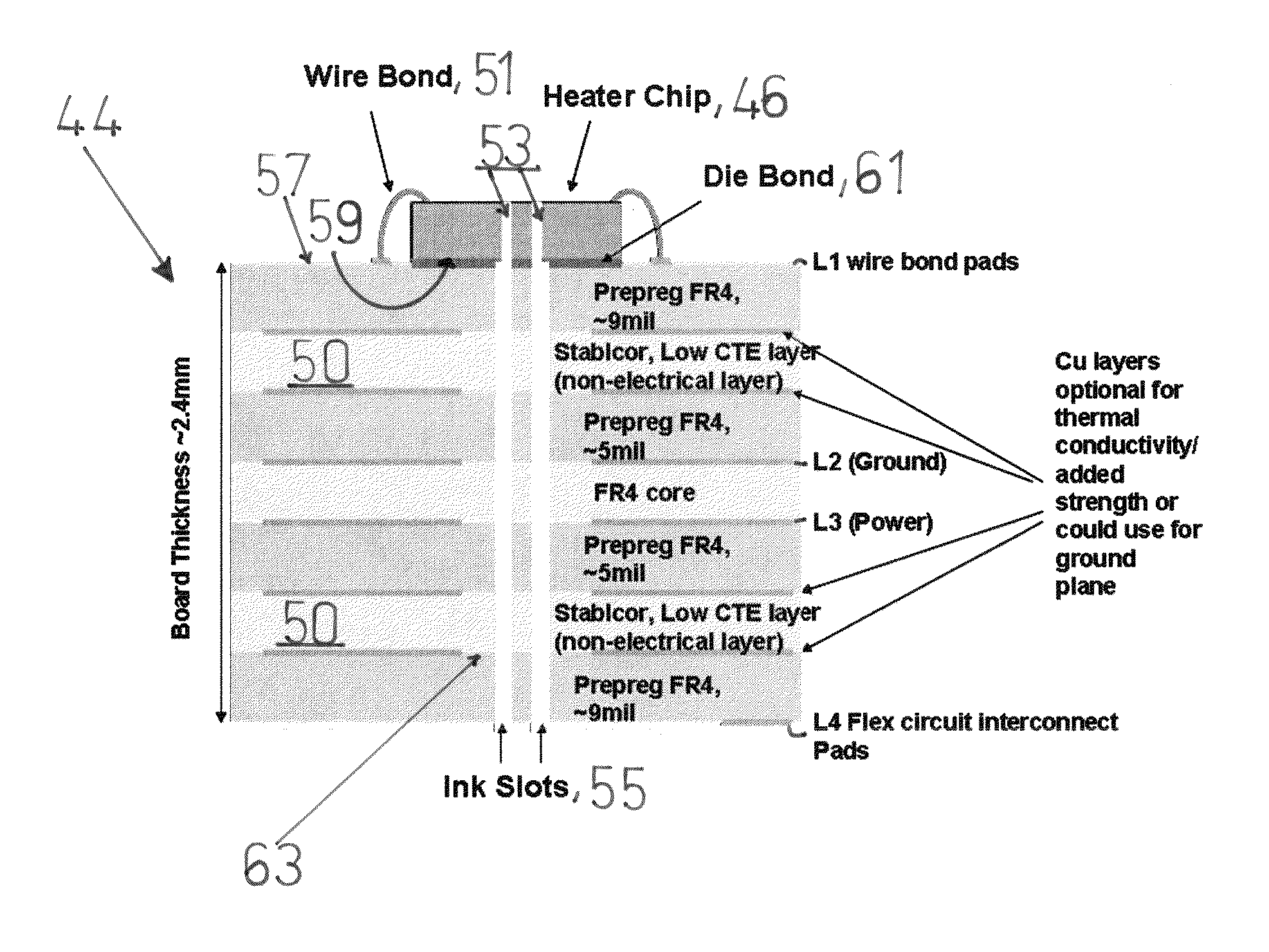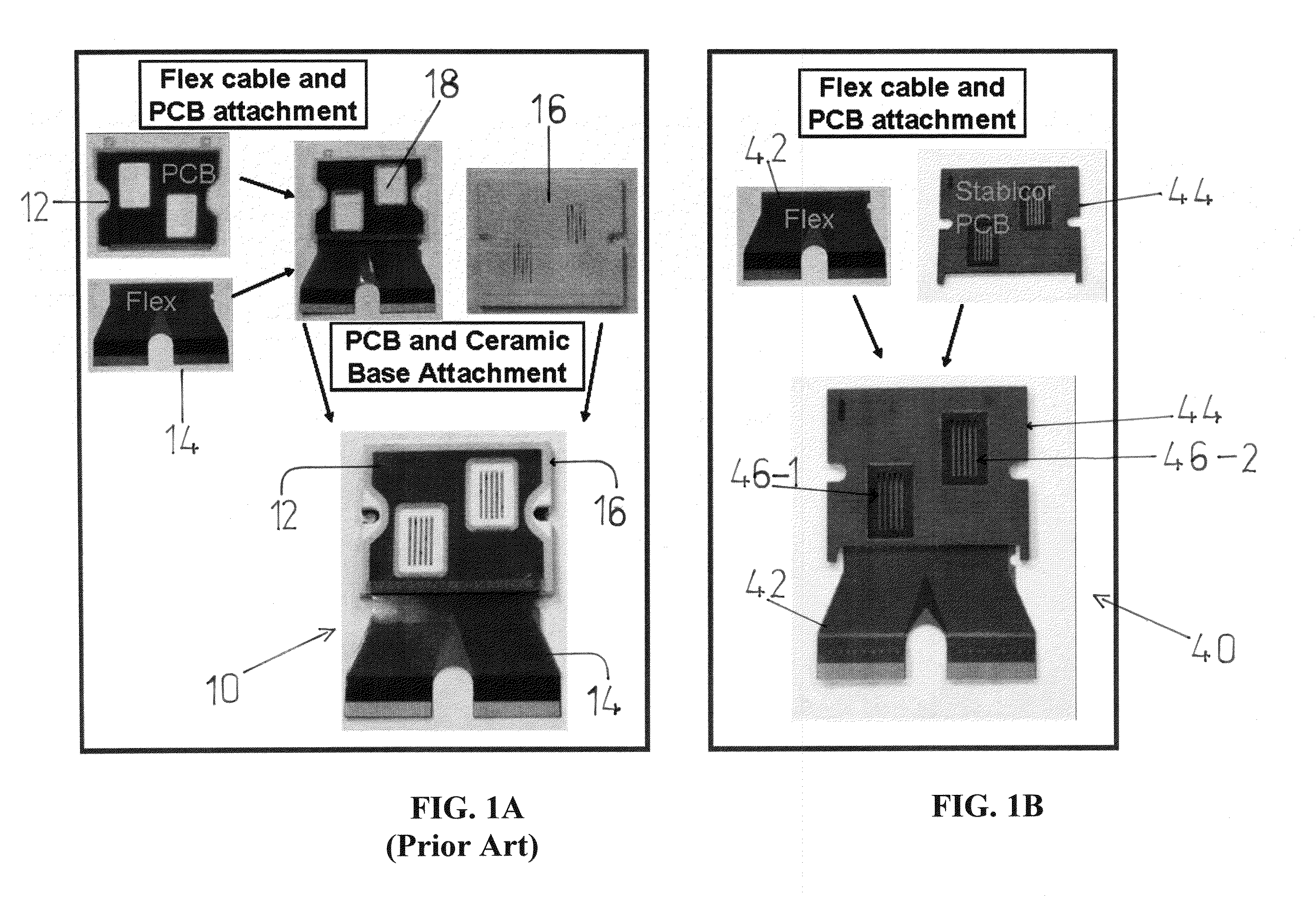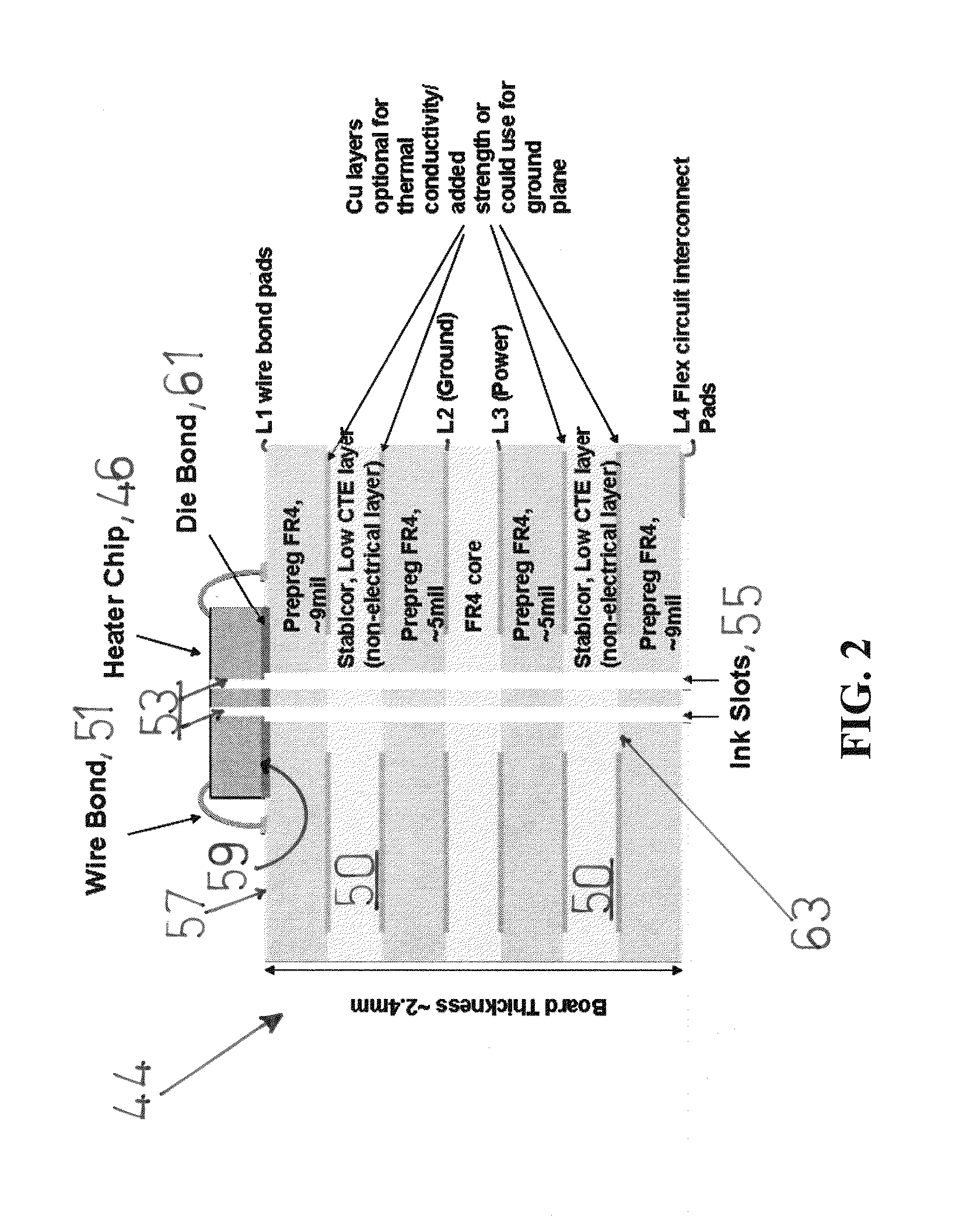Laminate constructs for micro-fluid ejection devices
- Summary
- Abstract
- Description
- Claims
- Application Information
AI Technical Summary
Benefits of technology
Problems solved by technology
Method used
Image
Examples
example
[0036]As an initial proof of concept, the inventors have mounted dies on several Stablcor layers of the above construction using the same die bond material, dispense, and pick-and-place processes used on conventional ceramic substrate designs. Thickness were somewhat arbitrarily set and design and process conditions were not optimized for planarity in the chip pocket area. Result: Y-axis chip bows were observed at less than 5 μm over a ½ inch chip length. While such is not as good as the 1-2 μm achieved on ceramic substrates, it is considerably better than the 15-16 μm achieved on other designs (not shown). It is believed that with the optimization of planarity between the chip and laminate construct, results will be further improved.
[0037]With reference to FIGS. 5-9, the laminate construct 44 is further useful in overcoming the disadvantages of the design in FIG. 4 (prior art). In all such embodiments, the laminate constructs are intended to provide fluidic and electrical interconn...
PUM
 Login to View More
Login to View More Abstract
Description
Claims
Application Information
 Login to View More
Login to View More - R&D
- Intellectual Property
- Life Sciences
- Materials
- Tech Scout
- Unparalleled Data Quality
- Higher Quality Content
- 60% Fewer Hallucinations
Browse by: Latest US Patents, China's latest patents, Technical Efficacy Thesaurus, Application Domain, Technology Topic, Popular Technical Reports.
© 2025 PatSnap. All rights reserved.Legal|Privacy policy|Modern Slavery Act Transparency Statement|Sitemap|About US| Contact US: help@patsnap.com



